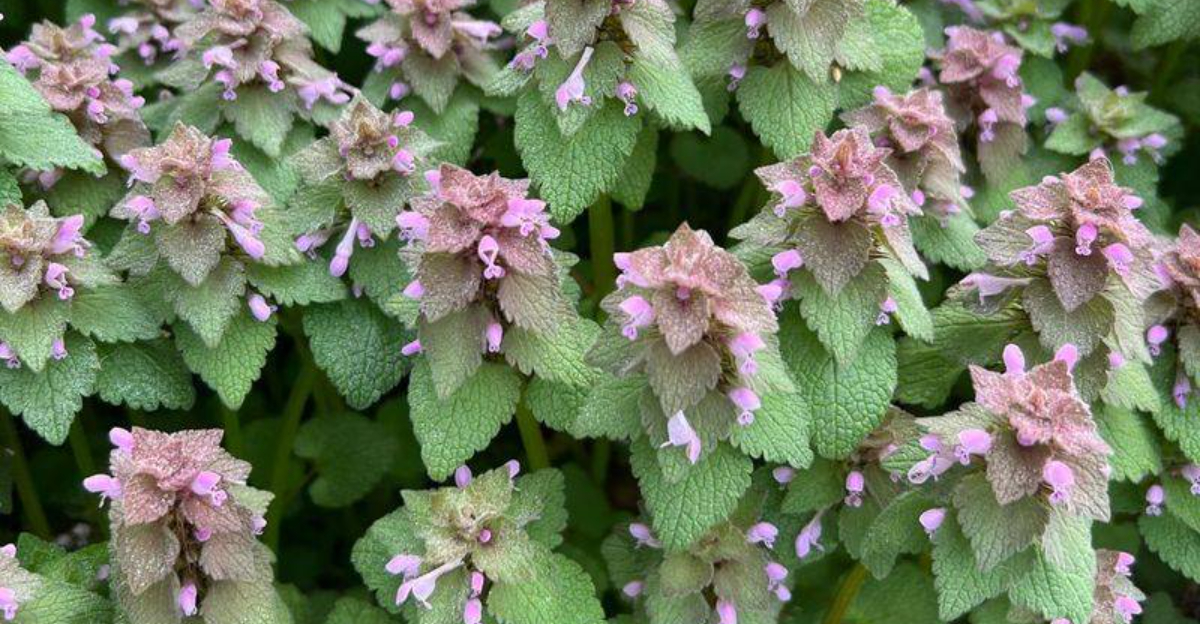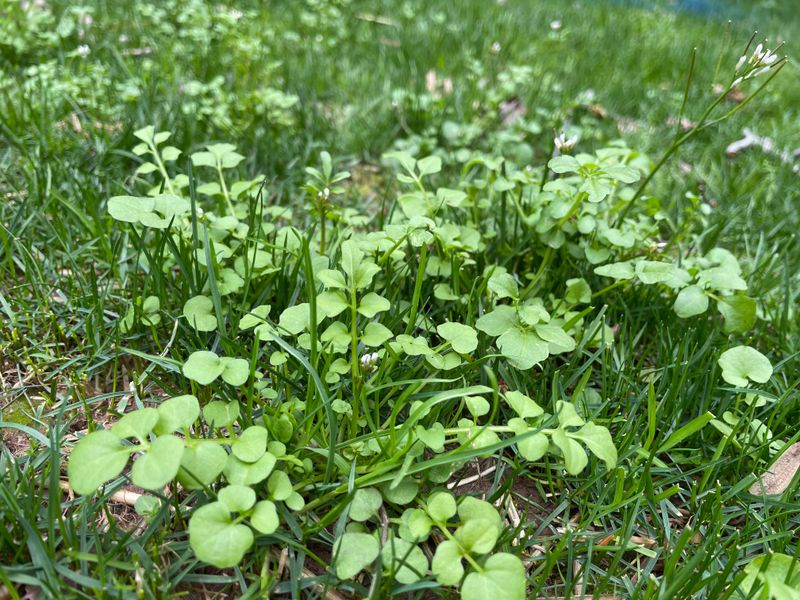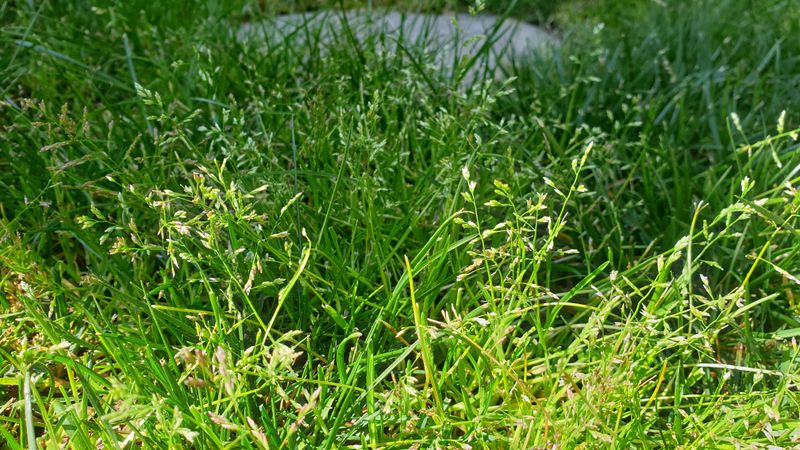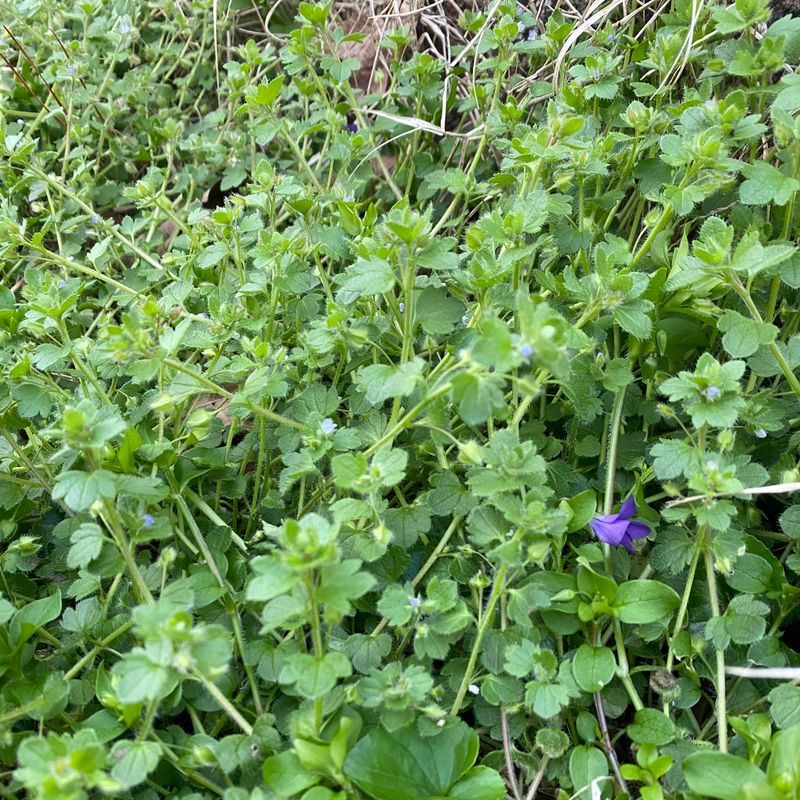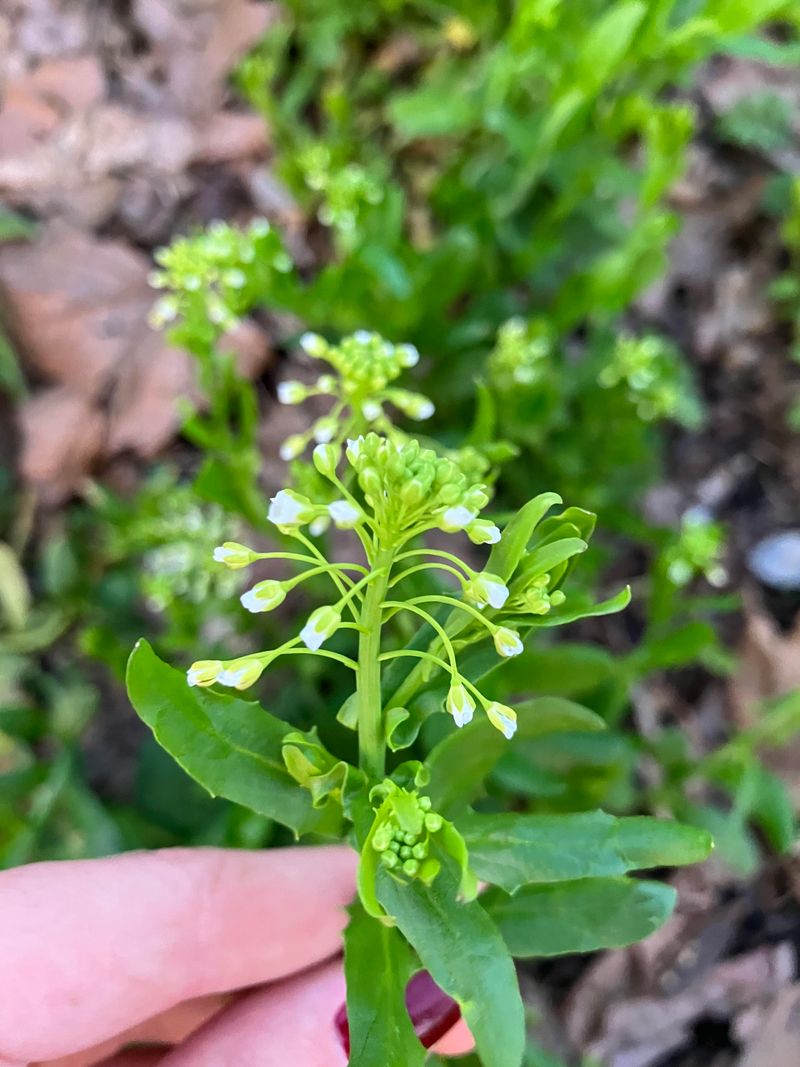Cold air sweeps through neighborhoods and lawns start to fade, yet a handful of stubborn intruders refuse to back down.
While flower beds sleep and turf slows to a crawl, these bold little troublemakers treat the season like an open stage.
They slip between blades of grass, settle into cracks you didn’t know you had, and pop up in spots that stayed empty all year.
Kentucky homeowners often wake up to find a fresh patch overnight, almost as if the ground decided to pull a fast one.
They act as though cold nights don’t apply to them at all. A hard frost comes through and they shrug it off.
A warm afternoon rolls in and they spring into action, taking advantage of any pause in the season.
What surprises people most is their persistence.
Pull them out, and a fresh troop often marches in before long. Once you recognize the signs and know their favorite hiding spots, you gain the upper hand.
These icy-month mischief-makers may put up a good fight, but they can’t outsmart a homeowner who sees them coming.
1. Henbit
Purple flowers might seem pretty at first, but henbit can quickly take over your winter lawn if you’re not careful.
This member of the mint family spreads fast and loves the cool temperatures Kentucky experiences from December through March.
You’ll recognize it by its square stems and small purple blooms that appear even in chilly weather.
Henbit thrives in thin or patchy grass where it finds room to establish itself.
The weed germinates in fall, grows throughout winter, and produces seeds by early spring before most grass wakes up.
That head start gives it a major advantage over your turf.
Hand-pulling works for small patches, especially after rain when the soil is soft.
For larger infestations, applying a pre-emergent herbicide in early fall prevents henbit seeds from sprouting.
Maintaining thick, healthy grass remains your best defense since henbit struggles to compete with established turf.
Fertilizing appropriately and overseeding thin areas in fall helps crowd out this persistent winter invader before it becomes a bigger problem.
2. Common Chickweed
Low-growing mats of chickweed can blanket your lawn before you even notice it arriving.
Tiny white flowers with deeply notched petals give this weed a delicate appearance, but don’t be fooled by its innocent look.
Chickweed spreads aggressively through stems that root at every node, creating dense carpets that smother grass underneath.
Cool, moist conditions make Kentucky winters ideal for chickweed growth.
It germinates in fall when temperatures drop and continues expanding through winter months.
The weed prefers shady spots and areas with compacted soil or poor drainage.
Regular mowing helps control chickweed by preventing seed production, though the plant grows so low that mower blades sometimes miss it entirely.
Improving soil drainage and increasing sunlight exposure makes your yard less hospitable to this invader.
Spot-treating with post-emergent herbicides works well for established patches.
Building thicker turf through proper fertilization and aeration reduces the open spaces where chickweed takes hold.
Acting quickly when you spot the first signs prevents this weed from dominating your entire lawn.
3. Hairy Bittercress
Watch out for the explosive seed pods on this sneaky winter weed! Hairy bittercress earned its name from the tiny hairs on its leaves and its bitter taste.
But the real problem comes from its unique seed dispersal method.
When mature seed pods are disturbed, they literally explode, shooting seeds several feet away and spreading the weed rapidly across your property.
Small white flowers appear on stems that rise above a rosette of compound leaves.
Each plant can produce thousands of seeds in a single season.
Hairy bittercress completes its entire life cycle during winter and early spring, going from seed to flower to seed again before summer arrives.
Pulling this weed requires caution since touching mature plants triggers seed dispersal.
Remove plants carefully before they flower, placing them in sealed bags rather than compost piles.
Pre-emergent herbicides applied in late summer or early fall prevent germination.
Mulching garden beds reduces open soil where seeds can land and sprout.
Regular inspection helps you catch new plants before they mature and spread their seeds throughout your landscape.
4. Purple Deadnettle
Purple-tinted leaves at the top of this plant make deadnettle easy to identify in winter lawns.
Despite its name suggesting danger, deadnettle doesn’t actually sting like true nettles.
The square stems and opposite leaves reveal its membership in the mint family, along with its cousin henbit.
Small purple flowers cluster where leaves meet stems, creating colorful patches that stand out against dormant grass.
Deadnettle germinates in fall and grows vigorously through winter months.
Kentucky’s moderate winter temperatures allow it to thrive and spread quickly through both seeds and creeping stems.
The weed prefers disturbed soil and areas where grass is weak or thin.
Early intervention prevents deadnettle from establishing large colonies in your yard. Hand-pulling works effectively for scattered plants, especially when soil moisture is adequate.
Pre-emergent herbicides applied before fall germination stop deadnettle before it starts.
Post-emergent treatments handle existing infestations.
Strengthening your lawn through proper care makes it harder for deadnettle to find openings.
Overseeding bare spots and maintaining appropriate mowing heights helps grass outcompete this colorful but unwanted winter visitor that returns year after year.
5. Annual Bluegrass
Lighter green patches in your winter lawn often signal annual bluegrass taking over.
Also called Poa annua, this weed grass looks similar to desirable turf at first glance, making it tricky to identify until it produces distinctive seed heads.
Those fluffy white seed heads appear even during winter, giving infected areas a frosted appearance that disrupts your lawn’s uniform look.
Annual bluegrass germinates when soil temperatures drop in fall, thriving in Kentucky’s cool, wet winter conditions. It grows in clumps that create uneven texture and color variations across your yard.
The weed has shallow roots and passes quickly when summer heat arrives, leaving brown dead patches behind.
Prevention works better than treatment since annual bluegrass is technically a grass that resists many broadleaf herbicides.
Pre-emergent applications in late summer before germination provide the most effective control.
Maintaining taller grass heights shades soil and discourages annual bluegrass establishment. Proper irrigation and fertilization help desirable grasses outcompete this winter invader.
Avoiding excessive nitrogen in fall reduces conditions that favor annual bluegrass growth while supporting stronger turf that can resist invasion naturally.
6. Corn Speedwell
Delicate blue flowers might catch your eye, but corn speedwell is no friend to Kentucky lawns.
Tiny blooms with darker blue stripes appear on hairy stems throughout winter and early spring.
The weed forms low-growing mats that spread through creeping stems, gradually choking out desirable grass in affected areas.
Corn speedwell prefers compacted soil and shady locations where grass struggles to grow thick and healthy.
It germinates in fall and remains active through winter, giving it a competitive advantage over dormant warm-season grasses.
Each plant produces numerous seeds that ensure future generations will return unless you take action.
Improving growing conditions for your grass creates an environment where speedwell can’t compete effectively.
Aerating compacted soil, adjusting shade through tree trimming, and overseeding thin areas all help.
Hand-pulling works for light infestations, though the creeping stems make complete removal challenging. Selective post-emergent herbicides target speedwell without harming most lawn grasses.
Timing applications during active growth periods in late winter or early spring provides best results.
Building dense, vigorous turf remains the ultimate solution, leaving no room for speedwell to establish its troublesome presence in your yard.
7. Shepherd’s Purse
Heart-shaped seed pods dangling from tall stems make shepherd’s purse unmistakable once you know what to look for.
This winter annual gets its charming name from those distinctive triangular seed capsules that resemble old-fashioned purses shepherds once carried.
Small white flowers appear at stem tips, but the seed pods steal the show and create the real problem by producing thousands of seeds per plant.
Shepherd’s purse germinates in fall and grows as a rosette of deeply lobed leaves close to the ground.
As winter progresses, flowering stems shoot upward, sometimes reaching a foot tall or more.
The weed tolerates a wide range of conditions but particularly loves disturbed soil and thin turf.
Catching shepherd’s purse early in its rosette stage makes removal much easier than waiting until it flowers and sets seed. Hand-pulling effectively eliminates small numbers of plants.
For widespread problems, broadleaf herbicides provide good control when applied during active growth.
Preventing bare soil through overseeding and mulching reduces germination opportunities.
Regular mowing cuts down seed production but won’t eliminate established plants entirely since the rosettes grow below mower height and simply send up new flowering stems.
8. Field Pennycress
Round, flat seed pods give field pennycress its coin-inspired name, but finding this weed in your yard is definitely not good fortune.
Small white flowers appear in clusters at stem tips during late winter and early spring.
The seed pods that follow are notched at the top and contain several seeds that can remain viable in soil for decades, creating long-term problems for your lawn.
Field pennycress emerges in fall as a rosette of smooth, bluish-green leaves. As temperatures warm slightly in late winter, flowering stems develop quickly.
The plant prefers disturbed or compacted soil and often appears in areas where construction or heavy foot traffic has damaged turf.
Removing field pennycress before it sets seed prevents future generations from plaguing your property.
The shallow taproot makes hand-pulling relatively easy when soil is moist.
Broadleaf herbicides effectively control this weed when applied to actively growing plants.
Reducing soil compaction through aeration and avoiding unnecessary traffic on your lawn creates conditions that favor grass over pennycress.
Establishing thick turf coverage eliminates the bare spots where this opportunistic weed takes hold.
Regular monitoring helps you spot and remove new plants before they mature and contribute more seeds to your soil’s weed bank.

